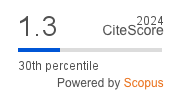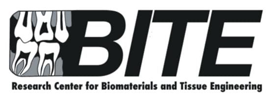The correlation of head posture (NSL/OPT angle) with maxilla and mandible relation (ANB angle) by cephalometric analysis (Review of Deutro Malay children aged 10–12 years in Jakarta)
Downloads
Background: Proper head posture involves an upright head with minimal muscle work and maximum mechanical efficiency in the central nervous system. Muscular imbalance in the cervical spine and stomatognathic system affects head posture and maxillary–mandibular malrelation. Age 10–12 years is the golden period for orthodontic treatment, for which an assessment of head posture needs to be considered. The nasion-sella line/odontoid process tangent (NSL/OPT) angle represents flexion–extension of the head posture; the A point, Nasion, B point (ANB) angle is used to determine the maxillary–mandibular relationship. No research has ever been conducted on the relationship between the NSL/OPT and ANB angles in children of the Deutro Malay race aged between 10 and 12 years. Purpose: This study aims to analyze the relationship between the NSL/OPT and ANB angles in children of the Deutro Malay race aged between 10 and 12 years. Methods: This research was conducted at the Pediatric Dental and Radiology Clinic of Universitas Indonesia Dental Hospital with 33 respondents aged between 10 and 12 years, taking the inclusion and exclusion criteria into account. Lateral cephalometric radiographs were taken, and the NSL/OPT and ANB angles were determined using ImageJ software. Data analysis was conducted using the Pearson correlation test. Results: The mean values for the NSL/OPT and ANB angles are 97.9 and 3.15, respectively. The correlation test result (r = 0.067; p-value = 0.713) indicates an immensely weak relationship between the NSL/OPT and ANB angles and is not significant. Conclusion: The results demonstrated that there was an exceedingly weak linear relationship; it can be concluded that the angle of head posture cannot be correlated to the ANB angle.
Downloads
Carini F, Mazzola M, Fici C, Palmeri S, Messina M, Damiani P, Tomasello G. Posture and posturology, anatomical and physiological profiles: overview and current state of art. Acta Biomed. 2017; 88(1): 11–6. pubmed: https://pubmed.ncbi.nlm.nih.gov/28467328/
Kale B, Hilmi Buyukcavus M. Effect of craniofacial growth pattern on head posture. J Dent Indones. 2020; 27(3): 144–50. doi: https://doi.org/10.14693/jdi.v27i3.1148
Stancker TG, Silva AC de O, Neto HP, Rodrigues CDA. Malocclusion influence on balance and posture: A systematic review. Man Ther Posturology Rehabil J. 2015; 13: 1–6. doi: https://doi.org/10.17784/mtprehabJournal.2015.13.320
Di Giacomo P, Ferrara V, Accivile E, Ferrato G, Polimeni A, Di Paolo C. Relationship between cervical spine and skeletal class II in subjects with and without temporomandibular disorders. Pain Res Manag. 2018; 2018: 4286796. doi: https://doi.org/10.1155/2018/4286796
Gomes L de CR, Horta KOC, Goncalves JR, Santos-Pinto A Dos. Systematic review: Craniocervical posture and craniofacial morphology. Eur J Orthod. 2014; 36(1): 55–66. doi: https://doi.org/10.1093/ejo/cjt004
Garg AK, Tikku T, Khanna R, Maurya RP, Srivastava K, Verma SL. Is head posture and malocclusion related? J Contemp Orthod. 2023; 3(3): 38–47. doi: https://doi.org/10.18231/j.jco.2019.026
Gadotti IC, Magee DJ. Validity of surface measurements to assess craniocervical posture in the sagittal plane: a critical review. Phys Ther Rev. 2008; 13(4): 258–68. doi: https://doi.org/10.1179/174328808X309250
Syabira TA, Sahelangi OP. Gambaran nilai pengukuran parameter sefalometrik pasien ras Deutro Melayu usia 6-12 tahun menggunakan analisis Steiner. J Kedokt Gigi Terpadu. 2019; 1(1): 48–52. doi: https://doi.org/10.25105/jkgt.v1i1.5158
Rosita M, Budiardjo SB, Rizal MF. Photometric analysis of the relationship between craniovertebral angle and facial profile in children aged 10–12 years. Saudi Dent J. 2024; 36(2): 277–80. doi: https://doi.org/10.1016/j.sdentj.2023.10.024
Aisy AR, Laviana A, Gayatri G. Facial height proportion based on Angle’s malocclusion in Deutero-Malayids. Dent J. 2021; 54(2): 96–101. doi: https://doi.org/10.20473/j.djmkg.v54.i2.p96-101
Sandoval C, Díaz A, Manríquez G. Relationship between craniocervical posture and skeletal class: A statistical multivariate approach for studying Class II and Class III malocclusions. CRANIO®. 2021; 39(2): 133–40. doi: https://doi.org/10.1080/08869634.2019.1603795
Peng H, Liu W, Yang L, Zhong W, Yin Y, Gao X, Song J. Does head and cervical posture correlate to malocclusion? A systematic review and meta-analysis. Ferrillo M, editor. PLoS One. 2022; 17(10): e0276156. doi: https://doi.org/10.1371/journal.pone.0276156
Michelotti A, Buonocore G, Manzo P, Pellegrino G, Farella M. Dental occlusion and posture: an overview. Prog Orthod. 2011; 12(1): 53–8. doi: https://doi.org/10.1016/j.pio.2010.09.010
Trovato F, Roggio F, Szychlinska M, Borzì F, Musumeci G. Clinical kinesiology and posturology applied to a group of italian students. A morphological observational study. J Funct Morphol Kinesiol. 2015; 1(1): 16–29. doi: https://doi.org/10.3390/jfmk1010016
Sidlauskas A, Zilinskaite L, Svalkauskiene V. Mandibular pubertal growth spurt prediction. Part one: Method based on the hand-wrist radiographs. Stomatologija. 2005; 7(1): 16–20. pubmed: https://pubmed.ncbi.nlm.nih.gov/16254472/
Dean JA. Managing the developing occlusion. In: McDonald and Avery’s Dentistry for the child and adolescent. 10th ed. St Louis: Elsevier; 2016. p. 415–78. doi: https://doi.org/10.1016/B978-0-323-28745-6.00022-3
Yohana N, Bahirrah S, Nazruddin N. The changing of occlusal plane inclination in Class II malocclusion. Dent J. 2020; 53(3): 133–9. doi: https://doi.org/10.20473/j.djmkg.v53.i3.p133-139
Ramadhani NA, Widyaningrum R, Gracea RS, Ningtyas AH, Mudjosemedi M. Length of cranial base and total face height in cephalograms for sex estimation in Indonesia. Dent J. 2024; 57(2): 97–101. doi: https://doi.org/10.20473/j.djmkg.v57.i2.p97-101
Sitasari PI, Merrystia N, Narmada IB. Management of a complete 180° rotation of bilateral maxillary canines. Dent J. 2021; 54(4): 174–80. doi: https://doi.org/10.20473/j.djmkg.v54.i4.p174-180
Di Blasio A, Di Blasio C, Pedrazzi G, Cassi D, Magnifico M, Manfredi E, Gandolfini M. Combined photographic and ultrasonographic measurement of the ANB angle: a pilot study. Oral Radiol. 2017; 33(3): 212–8. doi: https://doi.org/10.1007/s11282-017-0275-y
Alam MK, Kassab M, Eid Alroudhan I, Alabid IAI, Alruwaili MF, Alsharari KN, Alsharari FM, Alruwaili MF, Alrashed AF. Cephalometrics for orthognathic surgery (Cogs) analysis for Saudi Arabian adults. Eur J Mol Clin Med. 2020; 7(6): 2048–67. web: https://www.ejmcm.com/archives/volume-7/issue-6/9865
Copyright (c) 2025 Dental Journal

This work is licensed under a Creative Commons Attribution-ShareAlike 4.0 International License.
- Every manuscript submitted to must observe the policy and terms set by the Dental Journal (Majalah Kedokteran Gigi).
- Publication rights to manuscript content published by the Dental Journal (Majalah Kedokteran Gigi) is owned by the journal with the consent and approval of the author(s) concerned.
- Full texts of electronically published manuscripts can be accessed free of charge and used according to the license shown below.
- The Dental Journal (Majalah Kedokteran Gigi) is licensed under a Creative Commons Attribution-ShareAlike 4.0 International License

















